 W
WThe Battle of Fort Oswego was one in a series of early French victories in the North American theatre of the Seven Years' War won in spite of New France's military vulnerability. During the week of August 10, 1756, a force of regulars and Canadian militia under General Montcalm captured and occupied the British fortifications at Fort Oswego, located at the site of present-day Oswego, New York.
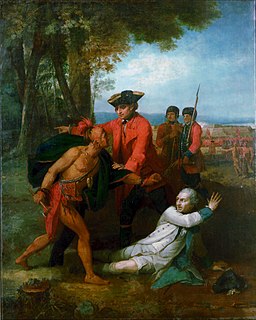 W
WThe Battle of Lake George was fought on 8 September 1755, in the north of the Province of New York. The battle was part of a campaign by the British to expel the French from North America, in the French and Indian War.
 W
WThe Battle of Sabbath Day Point took place on 23 July 1757 just off the shore of Sabbath Day Point, Lake George, New York and ended in a French victory. The battle, pitched approximately 450 French and allied Indian forces under the leadership of Ensign de Corbiere of the Troupes de la Marine against 350 New Jersey Blues under the command of Colonel John Parker. Ensign de Corbiere, aware of Colonel Parker's plan, ambushed and surrounded Parker's forces as they approached the shore in bateaux. In the ensuing rout Colonel Parker lost approximately 250 men with nearly 160 men killed or drowned and the rest taken prisoner. The French reported only one man slightly wounded.
 W
WThe 1759 Battle of Ticonderoga was a minor confrontation at Fort Carillon on July 26 and 27, 1759, during the French and Indian War. A British military force of more than 11,000 men under the command of General Sir Jeffery Amherst moved artillery to high ground overlooking the fort, which was defended by a garrison of 400 Frenchmen under the command of Brigadier General François-Charles de Bourlamaque.
 W
WThe 1757 Battle on Snowshoes was a skirmish fought between Rogers' Rangers and French and Indian troops during the French and Indian War on January 21, 1757. The battle was given this name because the British combatants were wearing snowshoes.
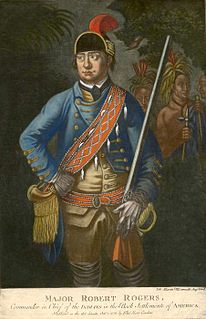 W
WThe 1758 Battle on Snowshoes occurred on March 13, 1758, during the French and Indian War. It was fought by members of British Ranger companies led by Robert Rogers against French troops and Indians allied to France. The battle took place near Lake George, now in northern New York, but then in the frontier area between the British province of New York and the French province of Canada. The battle was given its name because the British combatants were wearing snowshoes.
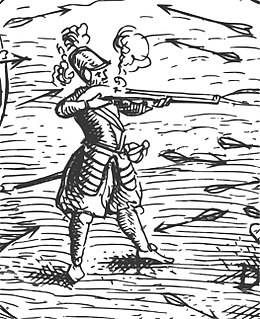 W
WSamuel de Champlain was a French colonist, navigator, cartographer, draftsman, soldier, explorer, geographer, ethnologist, diplomat, and chronicler. He made between 21 and 29 trips across the Atlantic Ocean, and founded Quebec, and New France, on 3 July 1608. An important figure in Canadian history, Champlain created the first accurate coastal map during his explorations, and founded various colonial settlements.
 W
WCharlotte County was a county in the colonial Province of New York in the British American colonies. It was created from Albany County on March 24, 1772. The county was named for Charlotte, Princess Royal, oldest daughter and fourth child of George III of the United Kingdom. Its boundaries extended far further than any current county. Its western boundary ran "from the Mohawk River to the Canada line, at a point near the old village of St. Regis and passing south to the Mohawk between Schenectady and Albany." Its southern boundary was near present-day Saratoga Springs. Much of western Vermont, then claimed by New York, was also part of the county. Its northern border was also the Canada–US border. Its county seat was Fort Edward.
 W
WThe Charter of Freedoms and Exemptions, sometimes referred to as the Charter of Privileges and Exemptions, is a document written by the Dutch West India Company in an effort to settle its colony of New Netherland in North America through the establishment of feudal patroonships purchased and supplied by members of the West India Company. Its 31 articles establish ground rules and expectations of the patroons and inhabitants of the new colonies. It was ratified by the Dutch States-General on June 7, 1629.
 W
WCumberland County, New York was a county in the Province of New York that became part of the state of Vermont. It was divided out of Albany County in New York in 1766, but eventually became a part of Vermont in 1777. At that time, Vermont was holding itself out as the Republic of Vermont and was not admitted to the Union until 1791.
 W
WJasper Danckaerts was the founder of a colony of Labadists along the Bohemia River in what is now the US state of Maryland. He is known for his journal, kept while traveling through the territory which had previously been part of the New Netherland. Documenting his journey in 1679-1680, it offers a description of the landscape and the lifestyle of inhabitants of the region in the late 17th century.
 W
WThe Dominion of New England in America (1686–89) was an administrative union of English colonies covering New England and the Mid-Atlantic Colonies. Its political structure represented centralized control similar to the model used by the Spanish monarchy through the Viceroyalty of New Spain. The dominion was unacceptable to most colonists because they deeply resented being stripped of their rights and having their colonial charters revoked. Governor Sir Edmund Andros tried to make legal and structural changes, but most of these were undone and the Dominion was overthrown as soon as word was received that King James II had left the throne in England. One notable change was the introduction of the Church of England into Massachusetts, whose Puritan leaders had previously refused to allow it any sort of foothold.
 W
WThe Fauconnier Patent was a royal land patent granted in 1705 in Dutchess County, Province of New York. It was the twelfth of fourteen granted between 1685 and 1706 that came to comprise the entirety of the historic county footprint.
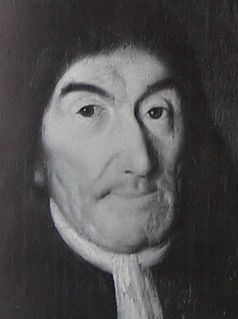 W
WFather Louis Hennepin, O.F.M. baptized Antoine, was a Belgian Roman Catholic priest and missionary of the Franciscan Recollet order and an explorer of the interior of North America.
 W
WThe systematic enslavement of African people in the United States began in New York as part of the Dutch slave trade. The Dutch West India Company imported eleven African slaves to New Amsterdam in 1626, with the first slave auction held in New Amsterdam in 1655. With the second-highest proportion of any city in the colonies, more than 42% of New York City households held slaves by 1703, often as domestic servants and laborers. Others worked as artisans or in shipping and various trades in the city. Slaves were also used in farming on Long Island and in the Hudson Valley, as well as the Mohawk Valley region.
 W
WThe Holland Land Company was an unincorporated syndicate of thirteen Dutch investors from Amsterdam who in 1792 and 1793 purchased the western two-thirds of the Phelps and Gorham Purchase, an area that afterward was known as the Holland Purchase. Aliens were forbidden from owning land within the United States, so the investors placed their funds in the hands of certain trustees who bought the land in central and western New York State, and western Pennsylvania. The syndicate hoped to sell the land rapidly at a great profit. Instead, for many years they were forced to make further investments in their purchase; surveying it, building roads, digging canals, to make it more attractive to settlers. They sold the last of their land interests in 1840, when the syndicate was dissolved.
 W
WThe Holland Society of New York was founded in New York City in 1885 to collect information respecting the settlement and history of New Netherland. Its main objective is to find and preserve documentation about the inhabitants' lives and times so as to elucidate the political, social, and religious patterns in the Dutch colony. The society sponsors historical publications, and provides resources for family studies and genealogy. Many of its members are especially active in genealogical research and publication. The Holland Society originated the New Netherland Project, which is translating and publishing the 17th-century records held by the New York State Archives. Among other current sponsorships are The Papers of Jacob Leisler Project and Records of the Translations of the Reformed Protestant Dutch Church of Flatbush, Kings County, New York.
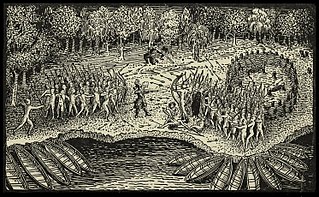 W
WDuring the summer of 1609, Samuel de Champlain attempted to form better relations with the local native tribes. He made alliances with the Wendat and with the Algonquin, the Montagnais and the Etchemin, who lived in the area of the St. Lawrence River. These tribes demanded that Champlain help them in their war against the Iroquois, who lived further south. Champlain set off with 9 French soldiers and 300 natives to explore the Rivière des Iroquois, and became the first European to map Lake Champlain. Having had no encounters with the Iroquois at this point many of the men headed back, leaving Champlain with only 2 Frenchmen and 60 natives.
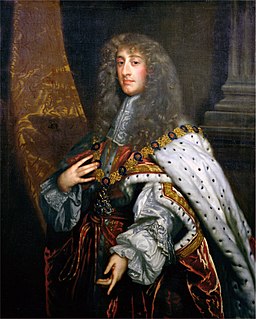 W
WJames II and VII was King of England and Ireland as James II, and King of Scotland as James VII, from 6 February 1685 until he was deposed in the Glorious Revolution of 1688. He was the last Catholic monarch of England, Scotland and Ireland; his reign is now remembered primarily for struggles over religious tolerance. However, it also involved the principles of absolutism and divine right of kings, and his deposition ended a century of political and civil strife by confirming the primacy of Parliament over the Crown.
 W
WKing George's War (1744–1748) is the name given to the military operations in North America that formed part of the War of the Austrian Succession (1740–1748). It was the third of the four French and Indian Wars. It took place primarily in the British provinces of New York, Massachusetts Bay, New Hampshire, and Nova Scotia. Its most significant action was an expedition organized by Massachusetts Governor William Shirley that besieged and ultimately captured the French fortress of Louisbourg, on Cape Breton Island in Nova Scotia, in 1745. In French, it is known as the Troisième Guerre Intercoloniale or Third Intercolonial War.
 W
WLeisler's Rebellion was an uprising in late-17th century colonial New York in which German American merchant and militia captain Jacob Leisler seized control of the southern portion of the colony and ruled it from 1689 to 1691. The uprising took place in the aftermath of England's Glorious Revolution and the 1689 Boston revolt in the Dominion of New England, which had included New York. The rebellion reflected colonial resentment against the policies of deposed King James II.
 W
WThe Little Nine Partners Patent was a land patent granted in 1706 in Dutchess County, New York, United States. It was the last of fourteen patents granted between 1685 and 1706 which came to cover the entirety of historic Dutchess County.
 W
WThe Manor of Rensselaerswyck, Manor Rensselaerswyck, Van Rensselaer Manor, or just simply Rensselaerswyck, was the name of a colonial estate—specifically, a Dutch patroonship and later an English manor—owned by the van Rensselaer family that was located in what is now mainly the Capital District of New York in the United States.
 W
WManor St. George or St. George's Manor was a large tract of land purchased by William "Tangier" Smith in the 17th century on Long Island, in central Suffolk County, New York. Parts of the original parcel, which was approximately 64,000 acres (260 km2) of land, are preserved in bits and pieces: 127 acres (0.51 km²) and the main house and buildings are called the Manor of St. George and located in Shirley; 35 acres (0.14 km²) and another house are called the Longwood Estate and located in Ridge; and 35 acres (0.14 km²) became part of the William Floyd Estate.
 W
WThe Map of Rensselaerswyck is a map created during the 1630s, probably 1632, at the request of the owner of the Manor of Rensselaerswyck, Kiliaen van Rensselaer, Dutch jeweler and patroon. Rensselaerswyck was the only successful patroonship within the colony of New Netherland, settled by the Dutch West India Company at the behest of the States-General of the United Netherlands. The map is believed to be the first ever commissioned or created of Rensselaerswyck.
 W
WThe Mohawk Valley raid was conducted against three Mohawk villages located in the Mohawk River valley by French and Indian warriors under the overall command of Nicolas d'Ailleboust de Manthet. The action, part of a long-running French-Iroquois conflict and King William's War, which pitted the French against the Iroquois-allied English, resulted in the destruction of three villages, including critical stores of food. Many Mohawk were either killed or captured, with the latter intended to populate Christian Indian villages near Montreal.
 W
WThe Moravian mission at Shekomeko was founded in 1740 by Christian Henry Rauch to convert the Mahican Indians in eastern New York.
 W
WNew Amsterdam was a 17th-century Dutch settlement established at the southern tip of Manhattan Island that served as the seat of the colonial government in New Netherland. The initial trading factory gave rise to the settlement around Fort Amsterdam. The fort was situated on the strategic southern tip of the island of Manhattan and was meant to defend the fur trade operations of the Dutch West India Company in the North River. In 1624, it became a provincial extension of the Dutch Republic and was designated as the capital of the province in 1625.
The General Assembly of New York, commonly known internationally as the New York General Assembly, and domestically simply as General Assembly, was the supreme legislative body of the Province of New York. It was the representative governing body in New York until April 3, 1775, when the Assembly disbanded after the outbreak of the Revolutionary War.
 W
WThe pound was the currency of the province and state of New York until 1793. Initially, the British pound and some foreign currencies circulated, supplemented by local paper money from 1709. Although these were denominated in pounds, shillings and pence, they were worth one third less than sterling, with one New York shilling worth the same as eight pence sterling.
 W
WOld Fort Johnson is a historic house museum and historic site at 2 Mergner Road in Fort Johnson, New York. It is the site of Fort Johnson, a two-story stone house originally enclosed in fortifications built by Sir William Johnson about 1749. The fort served as Johnson's home, business office and trading center until 1763 when he moved to Johnson Hall in what is now Johnstown, New York. Sir William's son Sir John Johnson owned the house from 1763 until 1776, when it was confiscated by the local Committee of Safety. The house remains and is owned and operated as a museum by the Montgomery County Historical Society. It was designated a National Historic Landmark in 1972.
 W
WPhilipsburg Manor was an English manor located north of New York City in Westchester County in the Province of New York. Netherlands-born Frederick Philipse I and two partners made the initial purchase of land that had been part of a Dutch patroonship owned by Adriaen van der Donck. Philipse subsequently bought his partners out and added more land before being granted a royal charter in 1693 for the 52,000 acres (21,000 ha) estate, becoming its first Lord.
 W
WThe Province of New York (1664–1776) was a British proprietary colony and later royal colony on the northeast coast of North America. As one of the middle Thirteen Colonies, New York achieved independence and worked with the others to found the United States.
 W
WThe Schenectady massacre was an attack against the village of Schenectady in the colony of New York on 8 February 1690. A party of more than 200 Frenchmen and allied Mohawk and Algonquin warriors attacked the unguarded community, destroying most of the homes, and killing or capturing most of its inhabitants. Sixty residents were killed, including 11 enslaved Africans. About 60 residents were spared, including 20 Mohawk.
 W
WThe Townsend Cemetery is located atop one of the most distinguished hills surrounding Oyster Bay, New York, USA. Members of the prominent Townsend family, some of whom built and later lived in Raynham Hall, are buried here. An old fort dating from before the Revolutionary War stood on this site.
 W
WTryon County was a county in the colonial Province of New York in the British American colonies. It was created from Albany County on March 24, 1772, and was named for William Tryon, the last provincial governor of New York. The county's boundaries extended much further than any current county. Its eastern boundary with the also-new Charlotte County ran "from the Mohawk River to the Canada line, at a point near the old village of St. Regis and passing south to the Mohawk between Schenectady and Albany." It extended north to the St. Lawrence River; its western boundary was the Treaty of Fort Stanwix's Line of Property, following the Unadilla River, Oneida Lake, Onondaga River and Oswego River to Lake Ontario, as the Iroquois Confederacy still controlled locations further west in the Indian Reserve. Tryon County's seat was Johnstown, which is today the county seat of Fulton County. The Tryon County Courthouse, built in 1772–1773, was listed on the National Register of Historic Places in 1972. The Tryon County Jail, also built in 1772–1773, was listed on the National Register of Historic Places in 1981.
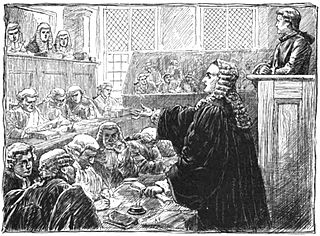 W
WJohn Peter Zenger (October 26, 1697 – July 28, 1746) was a German printer and journalist in New York City. Zenger printed The New York Weekly Journal. He was accused of libel in 1734 by William Cosby, the royal governor of New York, but the jury acquitted Zenger, who became a symbol for freedom of the press.
 W
W